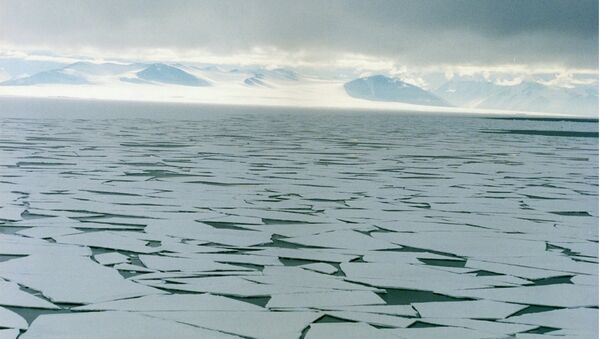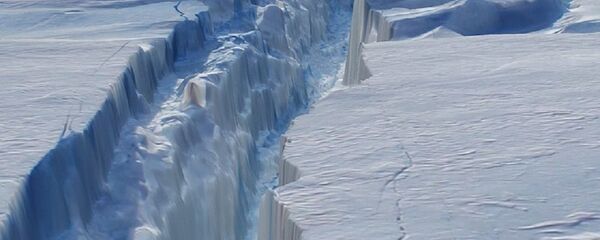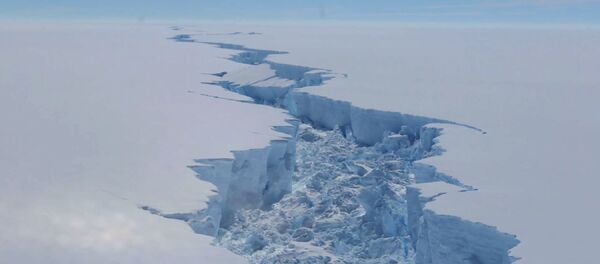A three-year, collaborative data collection survey of Antarctic ice called the ROSETTA-Ice project, has come out with a graphic structure image of the Ross Ice Shelf and changes registered on it.
In a riveting study published today in Nature Geoscience, ROSETTA-Ice team members outlined the discovery of an ancient geologic structure restricting the flow of ocean water that might signify the critical role of local ocean currents in the future retreat of the ice shelf.
In an effort to study the processes attributing to the accelerated melting of ice in Antarctica, the ROSETTA-Ice team faced the key challenge of how to gather data from a vast expanse with ice often more than a thousand feet thick.
To deal with this challenge, the scientists resorted to IcePod, a first-of-its kind system for collecting high-resolution data across the Polar Regions.
IcePod measures ice shelf height, thickness and internal structure, as well as magnetic and gravity signals of the underlying rock.
As the team flew time and again over the ice shelf, the IcePod's magnetometer showed a flat signal, until halfway across the ice shelf, the instrument displayed large variations.
The next step was to use IcePod's measurements of Earth's gravity field to model the shape of the sea floor beneath the ice shelf.
“We could see that the geological boundary was making the seafloor on the East Antarctic side much deeper than the West, and that affects the way the ocean water circulates under the ice shelf,” said Kirsty Tinto, the Lamont research scientist and lead author of the study.
Using the revised map of the seabed under the ice shelf, the team ran a model of ocean circulation and its effect on melting ice of the shelf.
Compared with the Amundsen Sea, where warm water crosses the continental shelf and results in rapid melting of the ice shelves, very little warm water reaches the Ross Ice Shelf.
In the Ross Sea deep ocean heat is removed by the cold winter atmosphere in an expanse of open water, called the Ross Shelf Polynya, before flowing underneath the shelf.
READ MORE: 43-Year-Old Mystery of Polynya in Antarctica Solved
The researchers’ model showed that although the cold water melts deeper portions of east Antarctic glaciers, the depth drop at the tectonic boundary steers it away from the west Antarctic.
The scientists were surprised that polynya also contributes to a intense summertime melting along the ice shelf's leading edge – a fact corroborated by radar images of the ice shelf's internal structure.
READ MORE: Global Warming: World’s Largest Penguin Species in Antarctic ‘Breeding Failure’
Overall, the results indicate models used to predict Antarctic ice loss in future climates must consider changing local conditions near the ice front, besides the large-scale fluctuations in the circulation of warm deep water.
“We found out that it's these local processes we need to understand to make sound predictions,” said Tinto.
Antarctica's ice is already melting at an alarming pace, so understanding the ways in which ice, ocean, atmosphere and geology interact with each other is vital for predicting how the ice shelf will change as the planet continues to warm.




